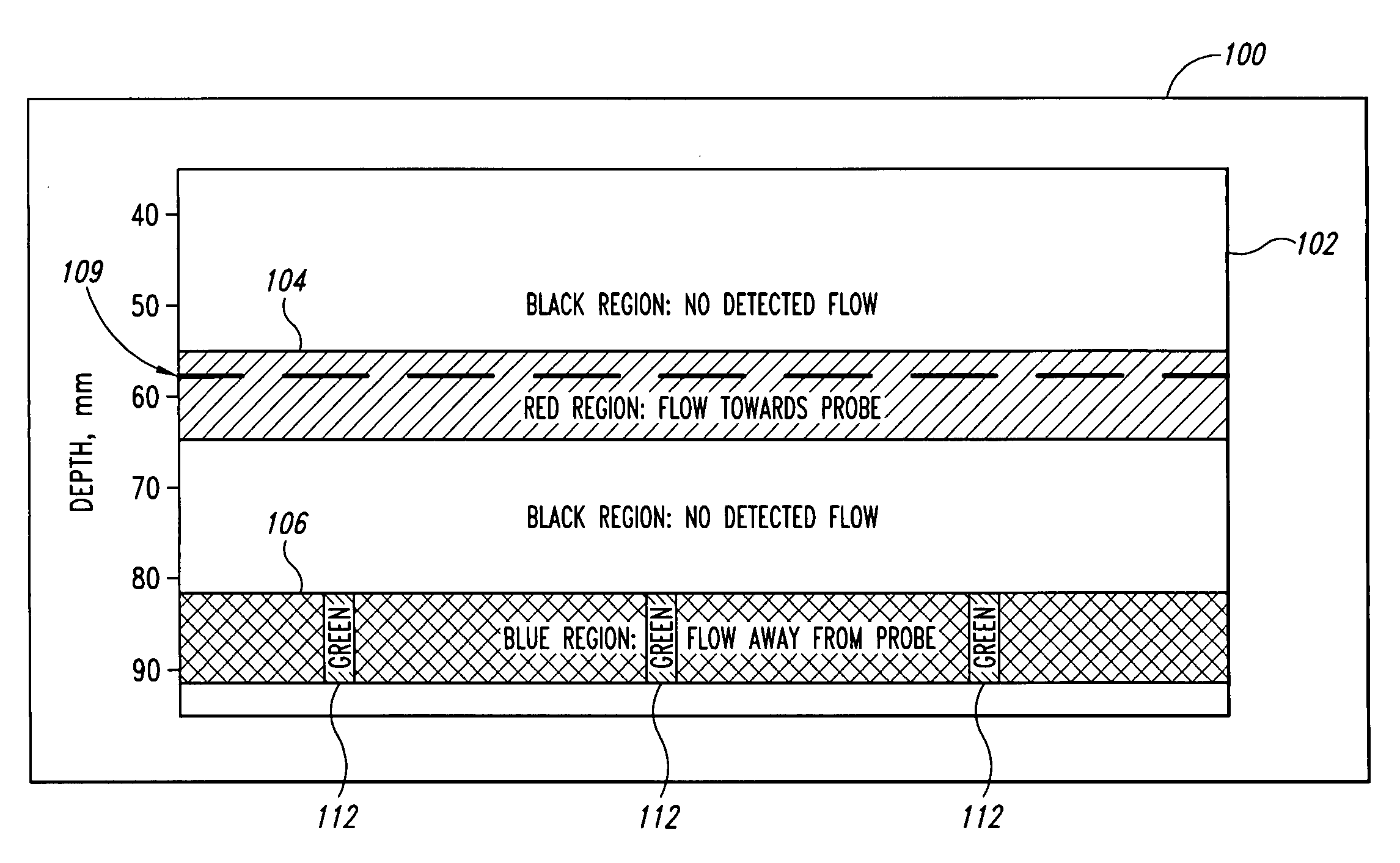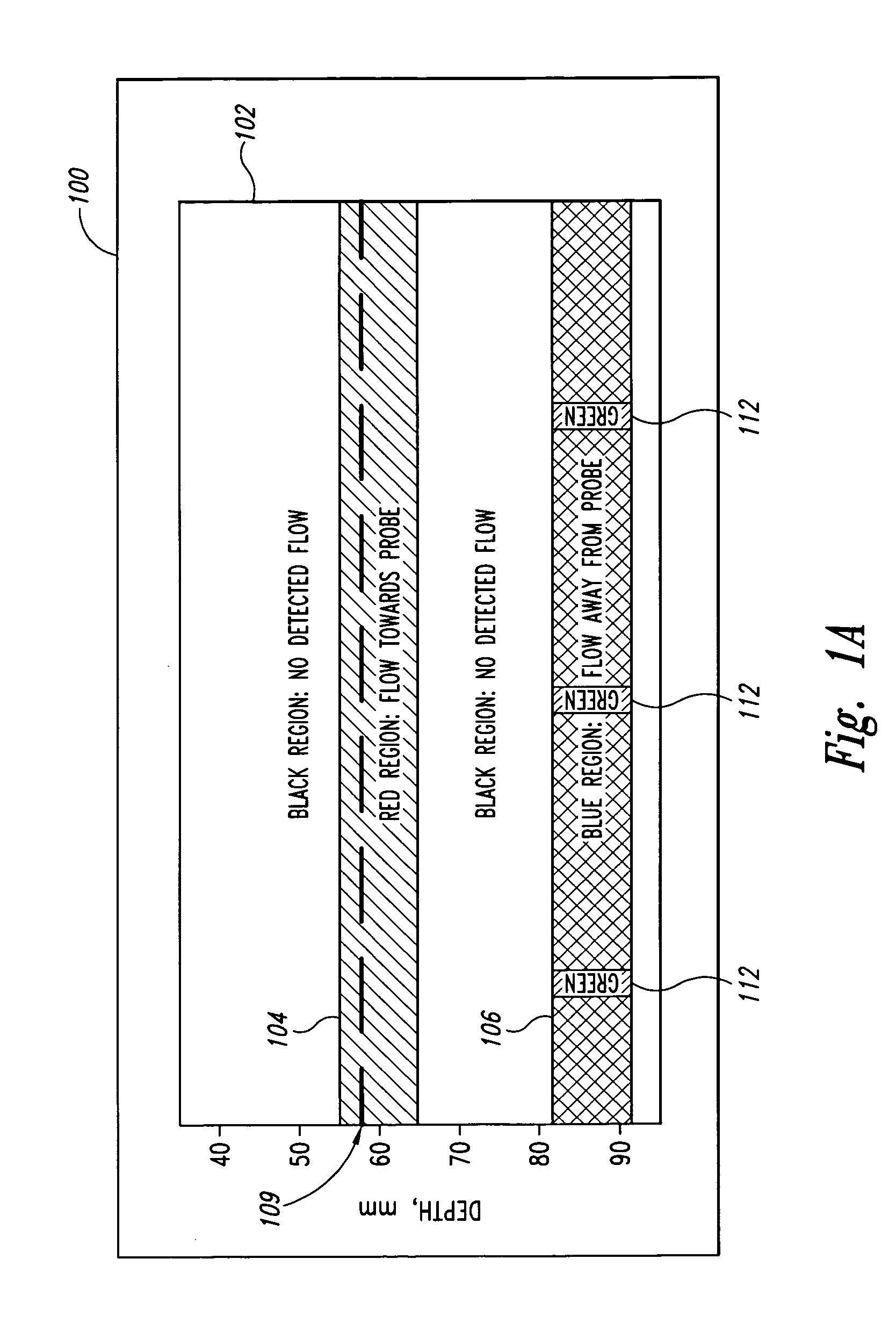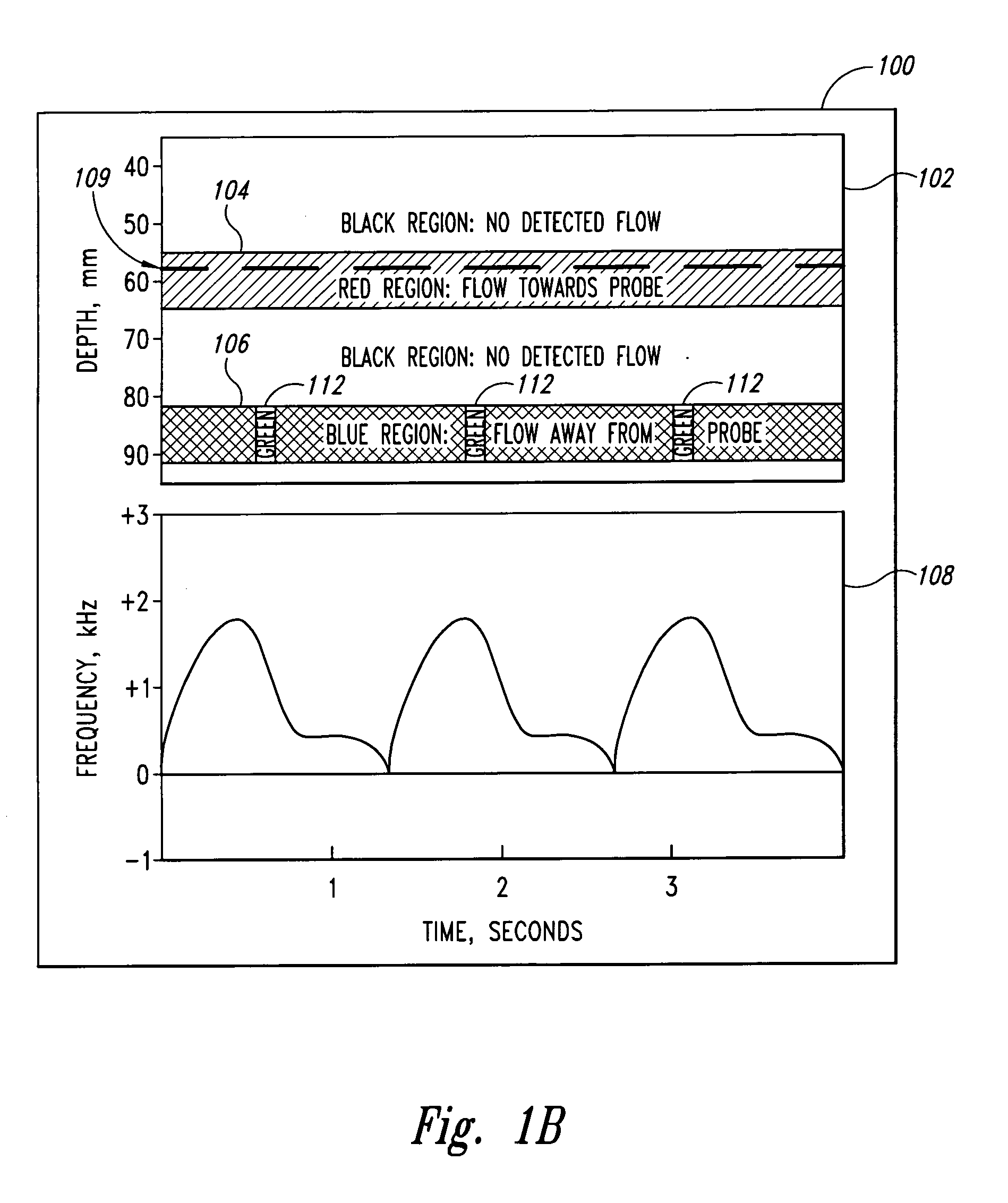Doppler ultrasound method and apparatus for monitoring blood flow and hemodynamics
a technology of hemodynamics and ultrasound method, which is applied in the direction of ultrasonic/sonic/infrasonic diagnostics, instruments, applications, etc., can solve the problems of not knowing if the user is looking in the correct direction at the wrong depth, the user's ultrasound equipment is rather difficult to properly orient and the user's ultrasound equipment is rather difficult to locate and position the ultrasound transducer or the patient's particular window
- Summary
- Abstract
- Description
- Claims
- Application Information
AI Technical Summary
Benefits of technology
Problems solved by technology
Method used
Image
Examples
Embodiment Construction
[0020] The following describes a method and apparatus for providing Doppler ultrasound information to a user, such as in connection with measuring blood velocities to quickly detect hemodynamically significant deviations from normal values across a range of depth. Certain details are set forth to provide a sufficient understanding of the invention. However, it will be clear to one skilled in the art that the invention may be practiced without these particular details. In other instances, well-known circuits, control signals, timing protocols, and software operations have not been shown in detail in order to avoid unnecessarily obscuring the invention.
[0021]FIG. 1A is an Aiming Mode Display 100 depicting a display mode of Doppler ultrasound information in accordance with an embodiment of the invention. In this display mode, as shown on the Aiming Mode Display 100, a depth-mode display 102 depicts, with color, blood flow away from and towards the ultrasound probe at various depths al...
PUM
 Login to View More
Login to View More Abstract
Description
Claims
Application Information
 Login to View More
Login to View More - R&D
- Intellectual Property
- Life Sciences
- Materials
- Tech Scout
- Unparalleled Data Quality
- Higher Quality Content
- 60% Fewer Hallucinations
Browse by: Latest US Patents, China's latest patents, Technical Efficacy Thesaurus, Application Domain, Technology Topic, Popular Technical Reports.
© 2025 PatSnap. All rights reserved.Legal|Privacy policy|Modern Slavery Act Transparency Statement|Sitemap|About US| Contact US: help@patsnap.com



